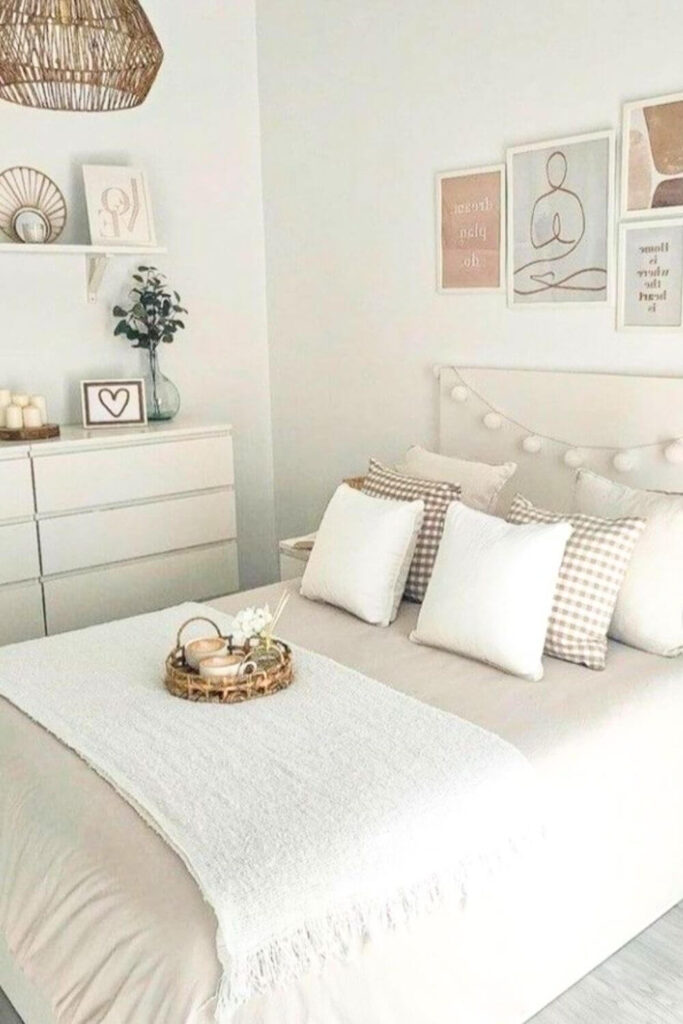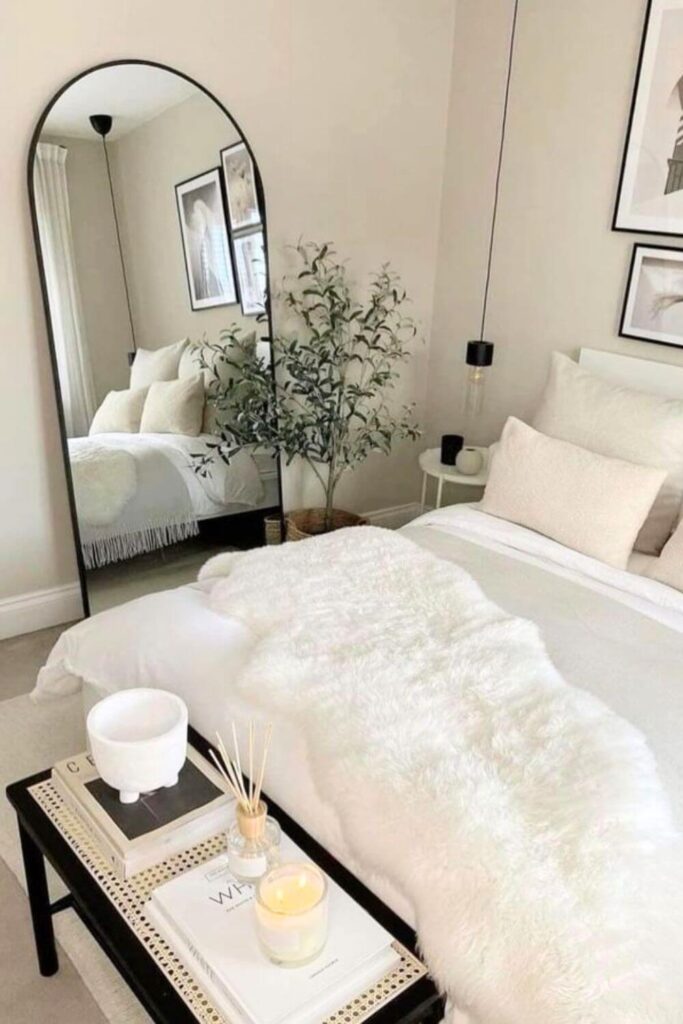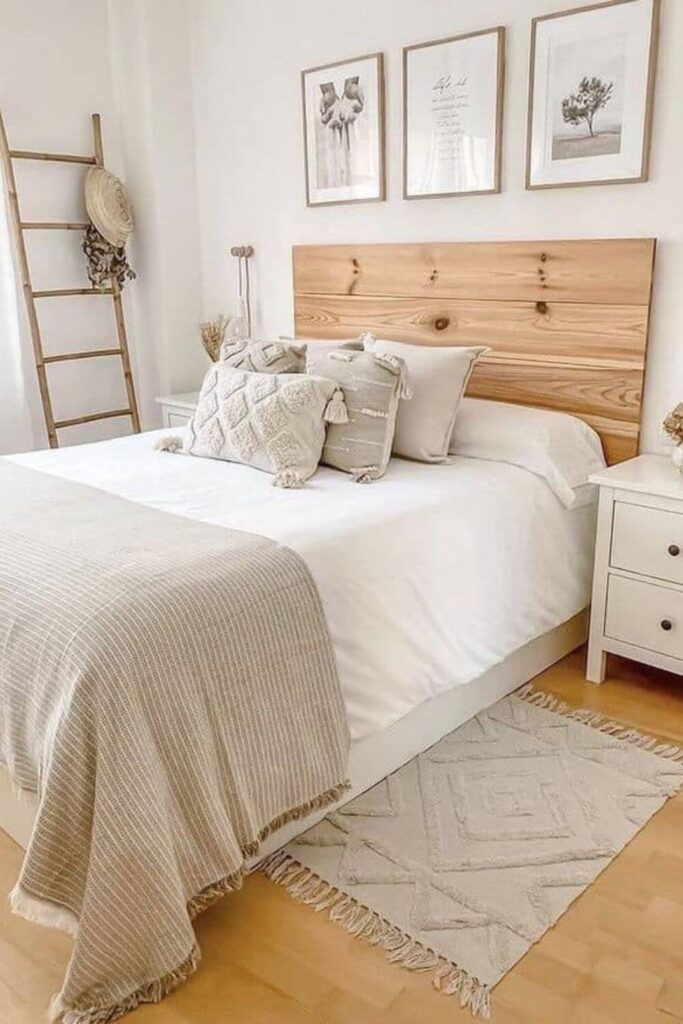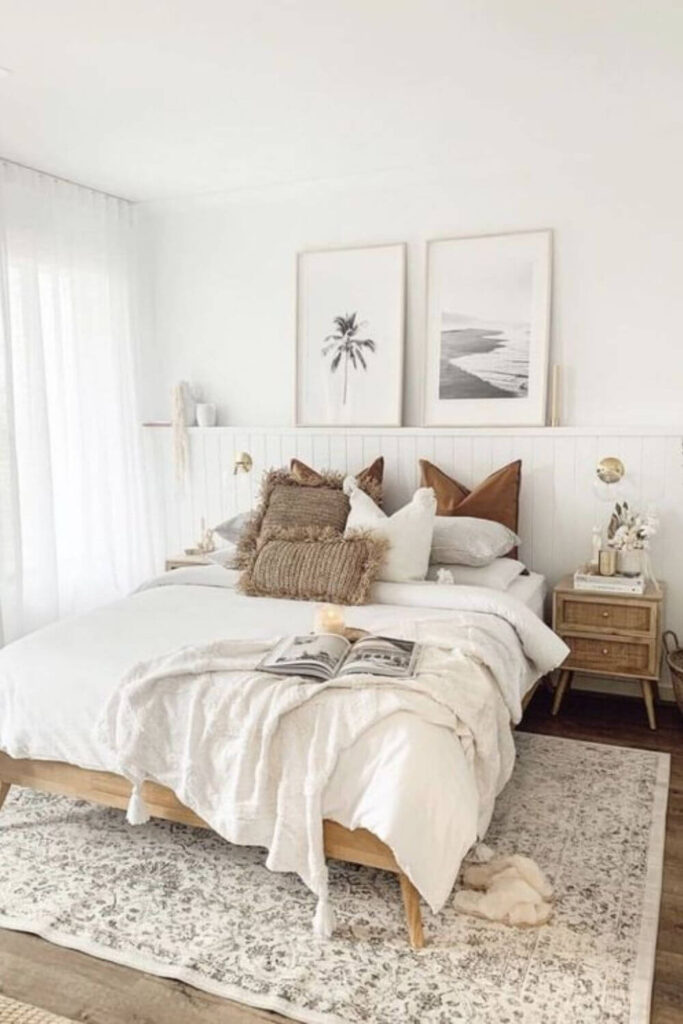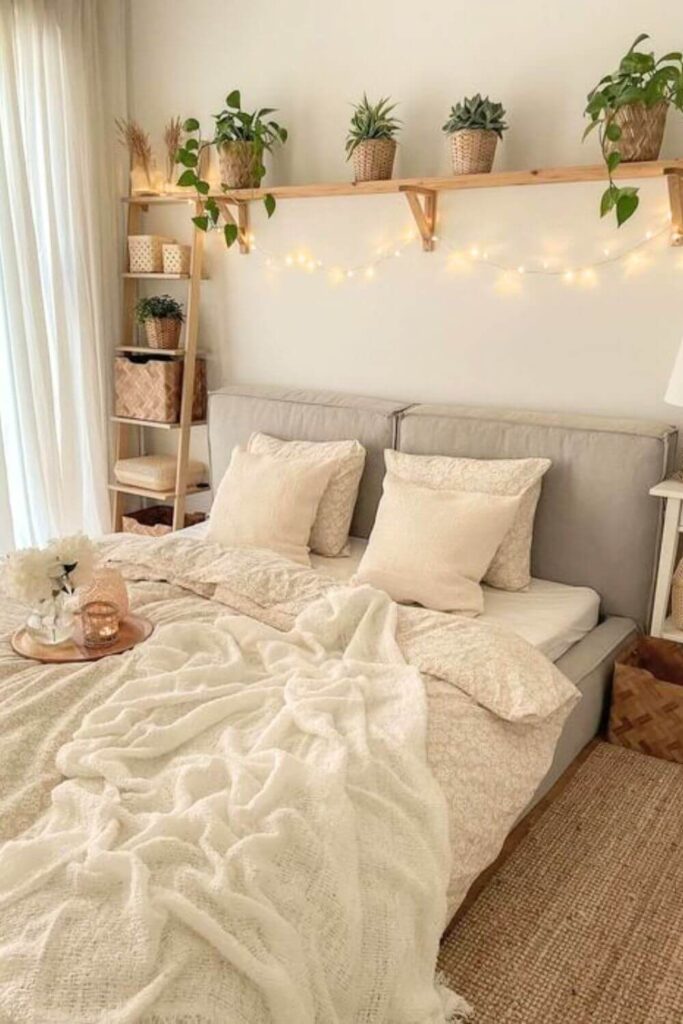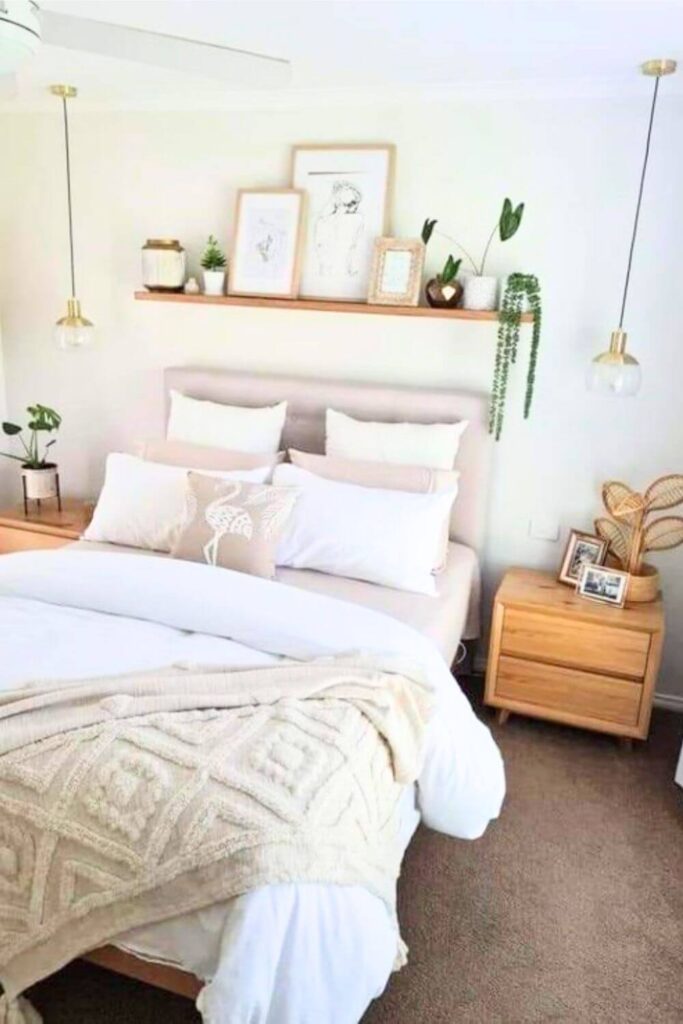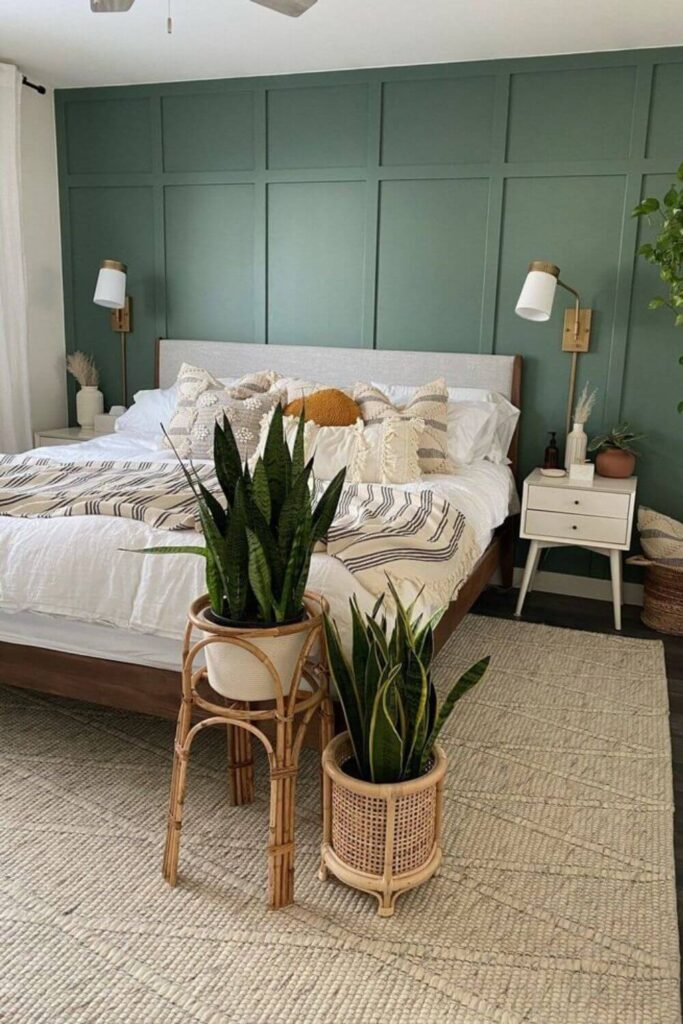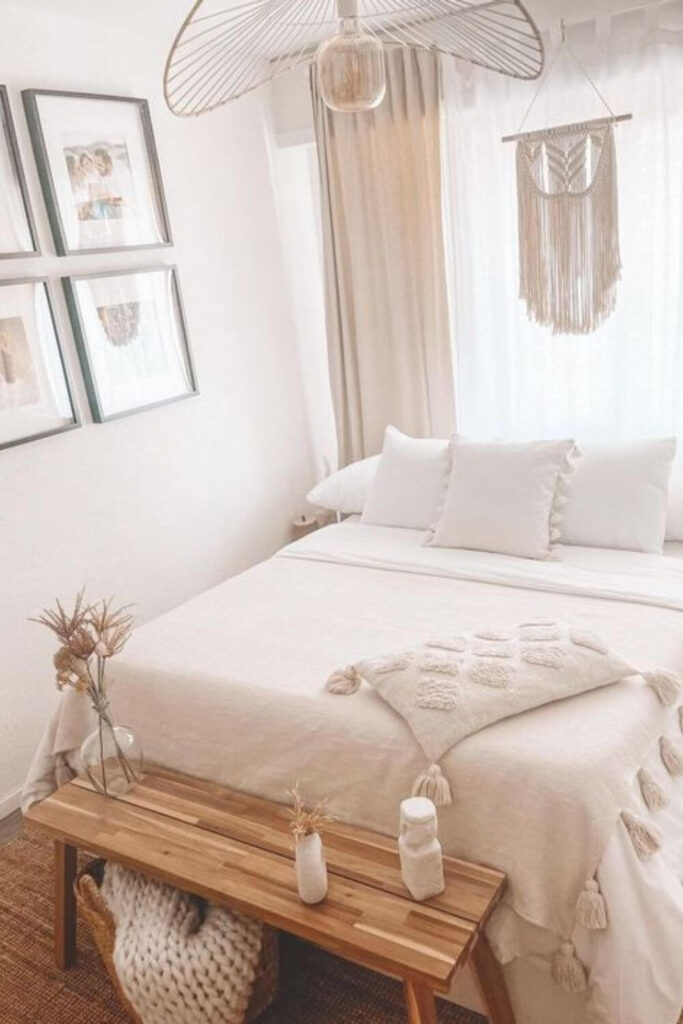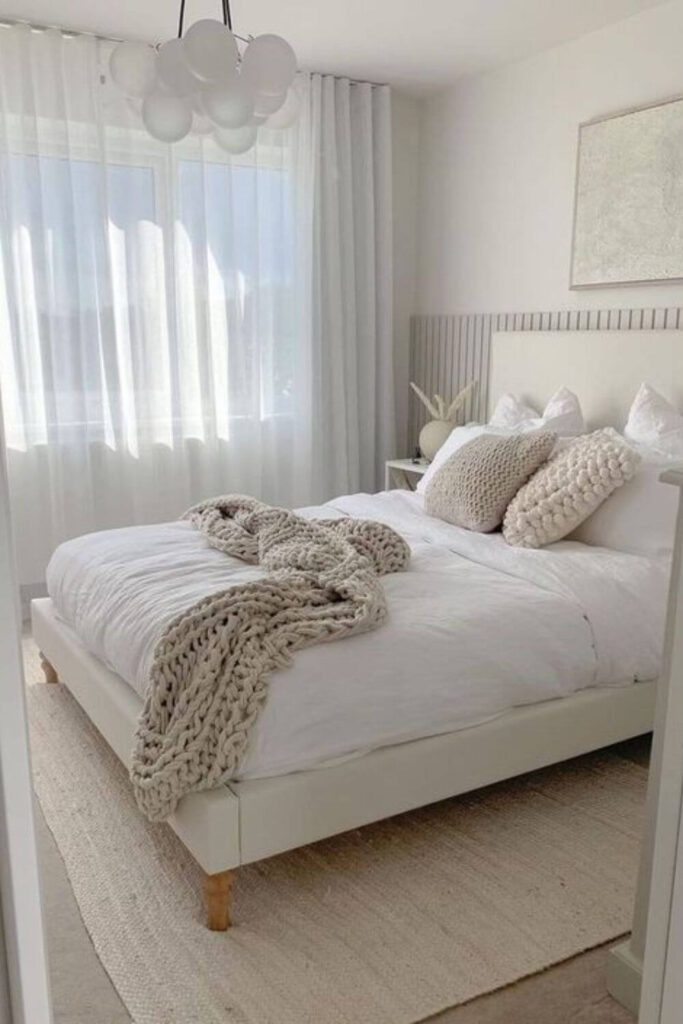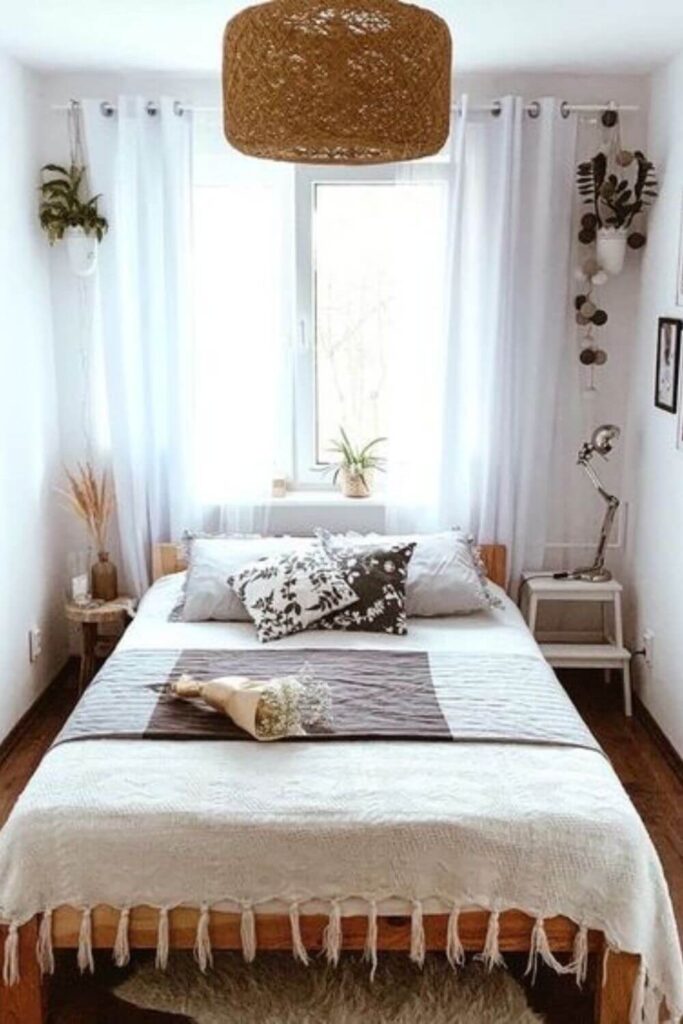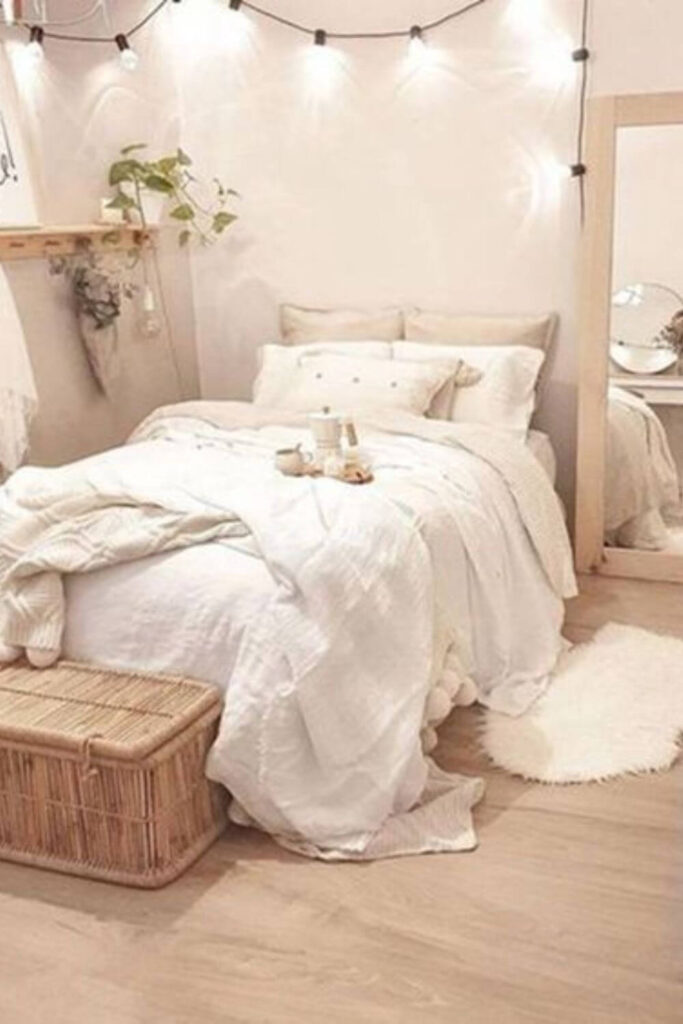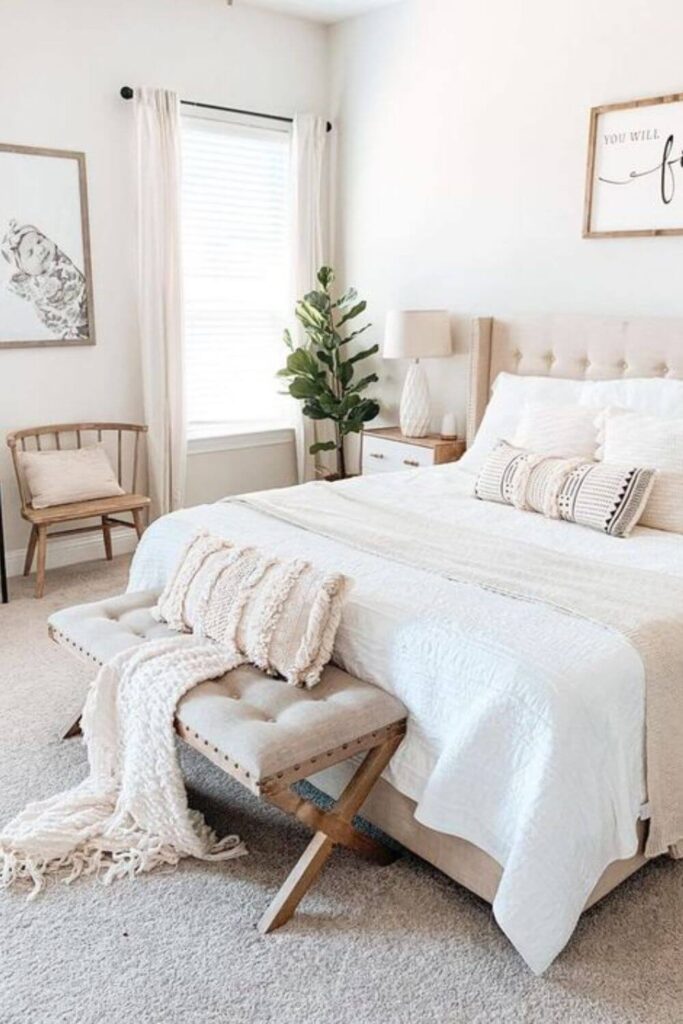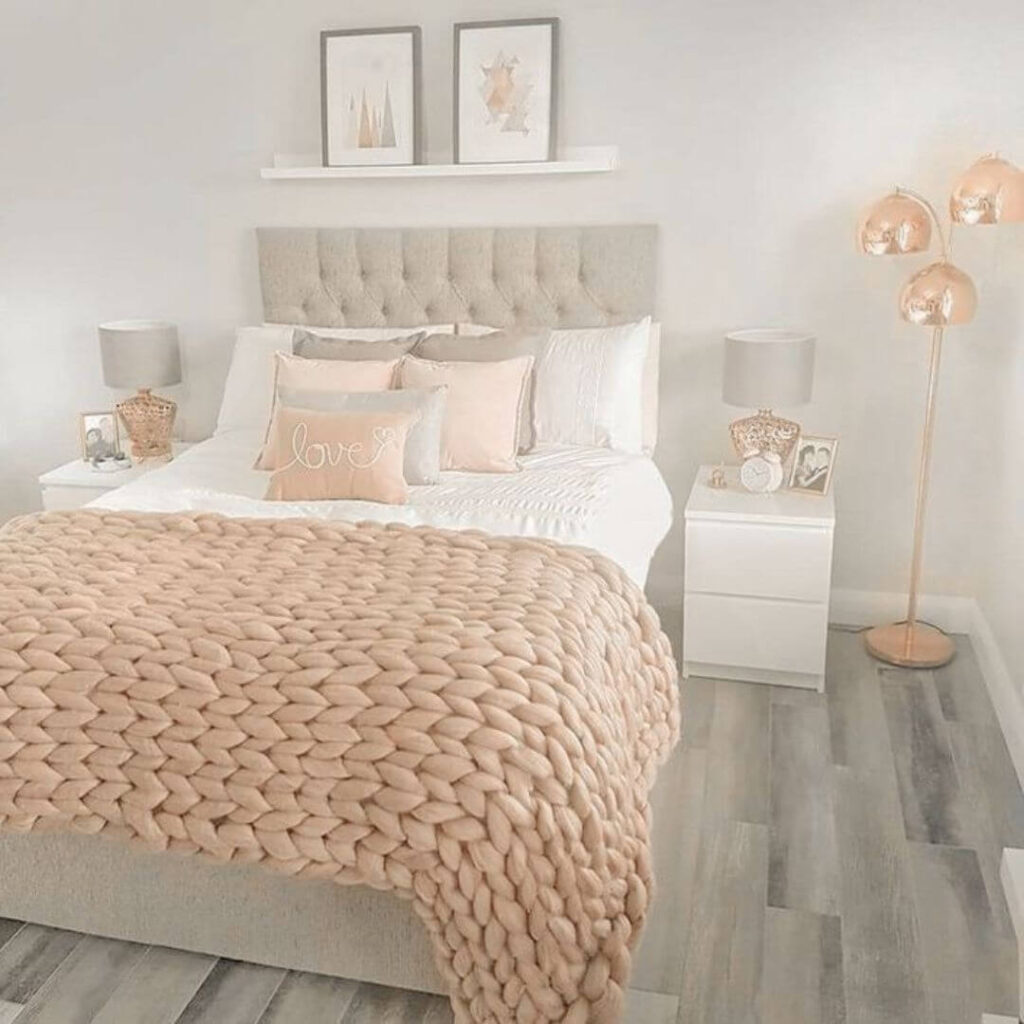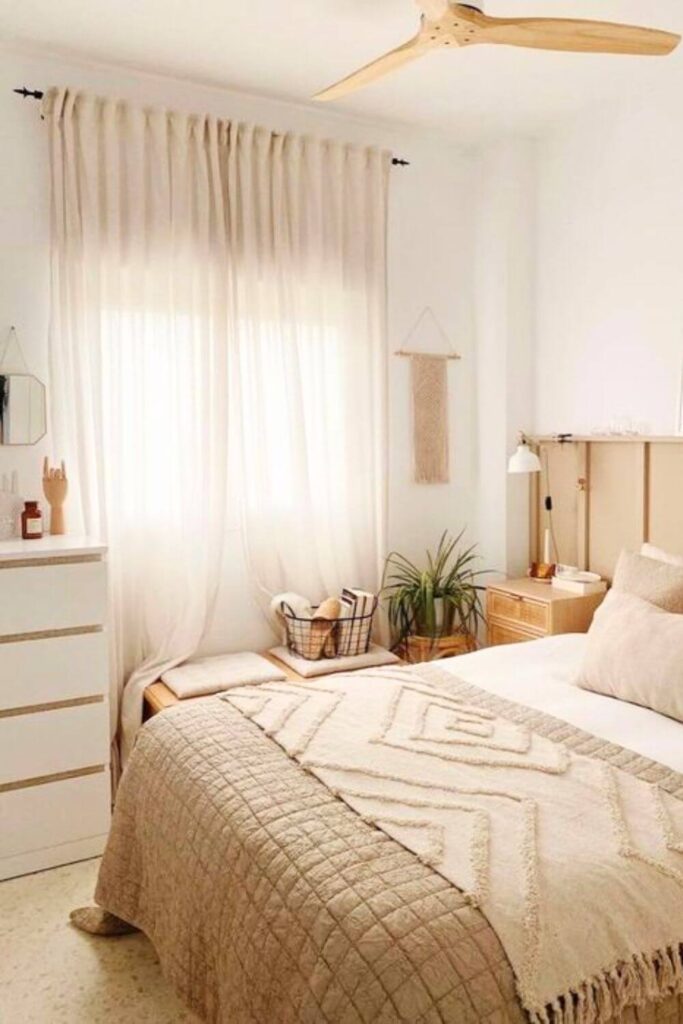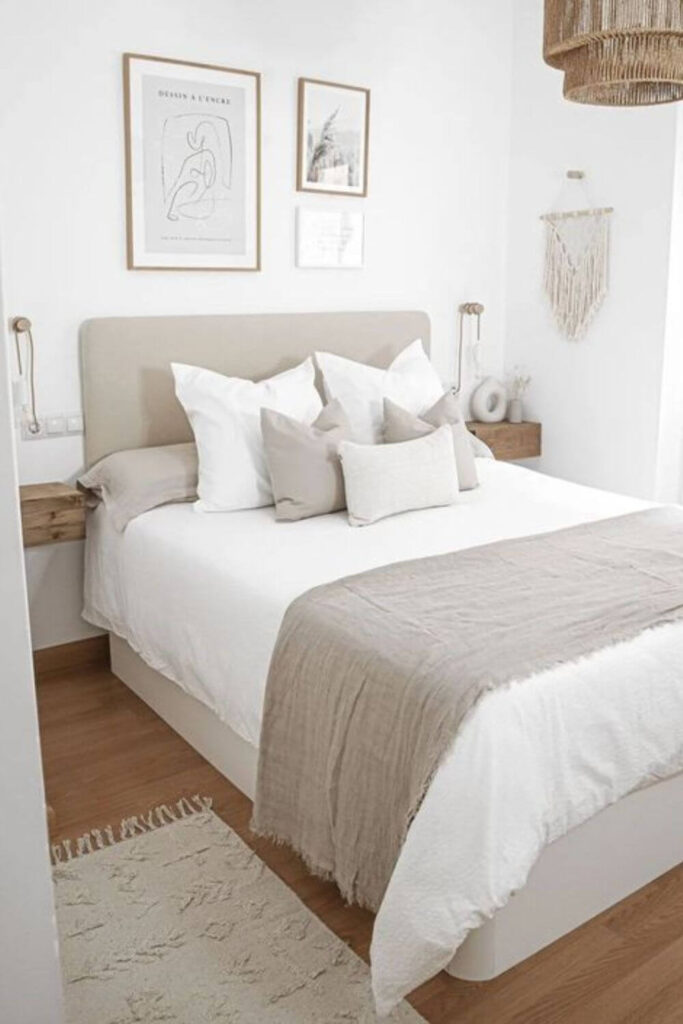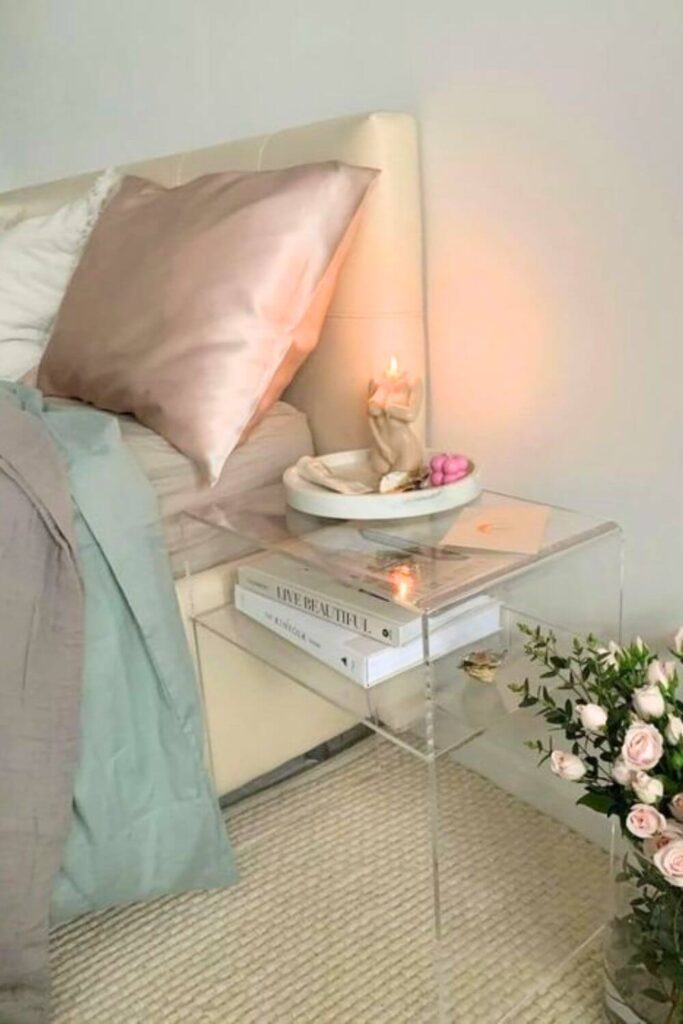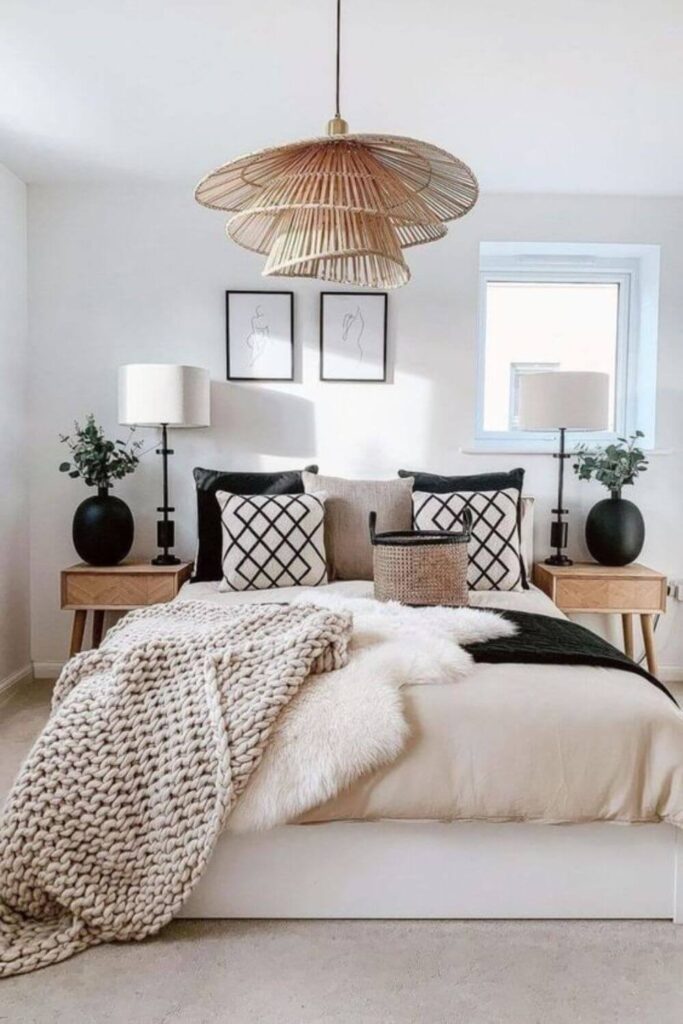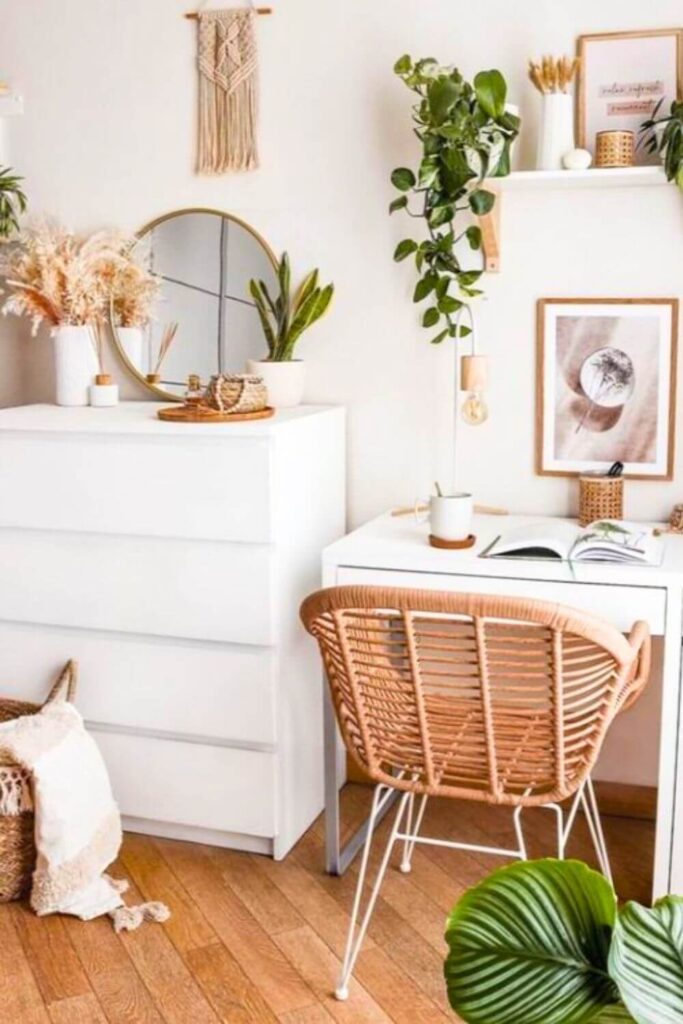In today’s fast-paced world, urban dwellers often find themselves contending with limited living space, especially when it comes to the bedroom. However, having a small bedroom doesn’t mean sacrificing style or comfort. With a bit of creativity and strategic design choices, you can transform even the most compact bedroom into a spacious and inviting retreat.
In this post, we’ll explore practical tips to make a small bedroom look and feel bigger. From clever furniture placement to optical illusions and color schemes, we’ll cover a range of techniques that will help you maximize space and create a more open and airy ambiance.
Whether you’re dealing with a cozy apartment bedroom or a compact guest room, these tips will empower you to make the most of your space without compromising on style or functionality. Get ready to unlock the full potential of your small bedroom and turn it into a tranquil oasis you’ll love spending time in.
Tip! You can pin any of the following idea images that you love, or inspire you to a relevant board on Pinterest! Simply click on save and pin your favourite idea.
Paint the walls and ceiling in light, neutral colors like white, cream, or soft pastels. Light colors reflect light and make a space feel more open and airy.
Hang mirrors on one wall or on closet doors to create the illusion of depth and space. Mirrors reflect light and make the room appear larger than it is.
Choose furniture pieces that serve more than one purpose, such as a bed with built-in storage drawers or a desk that folds down from the wall when not in use. This maximizes functionality while minimizing clutter.
Furniture with exposed legs creates a sense of openness by allowing light to pass through and giving the impression of more floor space. Choose sofas, chairs, and tables with slender legs rather than pieces that sit directly on the floor.
Opt for furniture that fits the scale of the room. Avoid oversized pieces that overpower the space and opt for sleek, streamlined furniture instead.
Utilize vertical space by installing shelves or wall-mounted storage units. This keeps the floor area clear and draws the eye upward, making the room feel taller.
Keep surfaces free of clutter to maintain a sense of openness. Use storage baskets, bins, or hidden storage solutions to corral items and keep them out of sight.
8. Lighting
Incorporate both ambient and task lighting to brighten the room and eliminate dark corners. Adequate lighting helps create a sense of spaciousness. Also consider hanging lights from the ceiling or wall mounted bedside lights.
Incorporate vertical stripes or patterns in the decor to draw the eye upward and create the illusion of higher ceilings. However, be mindful not to overwhelm the space with busy patterns.
An end-of-bed bench serves as both a stylish accent piece and a practical solution for a small bedroom. Its slim profile doesn’t overwhelm the space, while providing a functional surface for seating, storage, or displaying decor, maximizing both aesthetics and utility in a compact setting.
Adopt a minimalist approach to decor by keeping accessories and decorative items to a minimum. Choose a few key pieces that enhance the space without overwhelming it.
Arrange furniture along the perimeter of the room to create an open area in the center. Leave pathways around furniture pieces to maintain a sense of flow and accessibility.
If possible, choose light-colored flooring materials such as light wood or pale laminate. Light floors reflect more light and contribute to the overall brightness and spaciousness of the room.
Incorporate texture into the decor through textiles such as rugs, throws, and pillows. Textured surfaces add depth to the room without overwhelming the space, creating visual interest.
Choose furniture pieces with reflective surfaces such as glass or mirrored finishes. These surfaces bounce light around the room, making it feel brighter and more open.
Choose simple window treatments such as blinds or sheer curtains that allow natural light to filter into the room. Avoid heavy drapes or elaborate window coverings that can weigh down the space. Install curtains that hang from ceiling to floor, even if the windows themselves are smaller. This draws the eye upwards and gives the illusion of higher ceilings and larger windows.
Choose floating or wall-mounted furniture pieces such as bedside tables, nightstands and desks to create a sense of openness and free up floor space. This visually lightens the room and makes it appear larger.
Hang large-scale artwork or mirrors on the walls to create focal points and visually expand the room. Choose pieces that complement the scale of the room and draw the eye upward or outward.
Choose furniture with translucent materials like acrylic or glass. These pieces visually disappear into the room, creating an uncluttered look and making the space feel more open.
Stick to a monochromatic color palette for walls, furniture, and accessories. This creates a cohesive look that visually expands the space and reduces visual clutter.
Define different functional zones within the room using area rugs or furniture arrangement. By visually separating sleeping, working, and lounging areas, you can make the room feel more organized and spacious.

